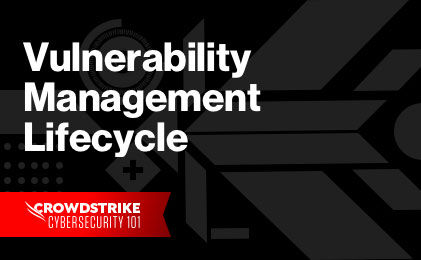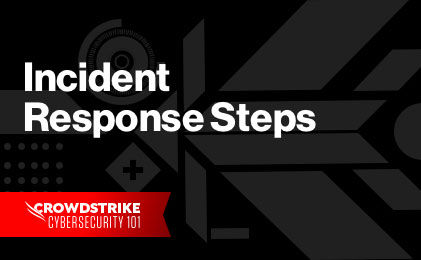What is IT asset discovery?
IT asset discovery is the process an organization uses to identify, catalog, and document all of its IT assets. These assets can include software applications, virtual machines, databases, IP addresses, and cloud services, whether they’re on-premises, in the cloud, or in hybrid environments. Technological trends — such as cloud adoption and the shift to remote work — make it more critical than ever to keep track of all the components that make up a company’s IT environment.
For security teams, the importance of asset discovery extends beyond the routine task of inventory management. Security teams need to be aware of every asset and whether each one has the appropriate security coverage, as mapped out in the organization’s cybersecurity framework. When there’s a close harmony between the asset inventory and security controls, organizations can more effectively safeguard the environment.
What is an IT asset?
- Hardware assets: Servers, laptops, smartphones, printers, virtual machines (VMs), cloud instances, networking equipment (i.e. routers and switches)
- Software assets: Software applications, browser extensions, digital certificates, licenses, software as a service (SaaS), etc.
IT asset discovery use cases and benefits
From a security and IT lens, having a complete and accurate understanding of the organization’s assets provides many important benefits across core security and IT use cases:
- Security controls coverage: Identifying assets with missing or malfunctioning agents, outdated operating systems, and end-of-life systems is essential for maintaining robust IT hygiene. It’s also indispensable for identifying gaps in security coverage.
- Vulnerability management: Asset discovery plays a pivotal role in supporting an organization’s ability to prepare for, detect, and respond to vulnerabilities.
- Incident response investigation: During security incidents, access to detailed information about affected devices equips security teams with essential resources so they can efficiently manage investigations and expedite response efforts.
- Identification and isolation of rogue devices: Asset discovery helps unearth unauthorized and rogue devices in a network so that they can be removed or segmented from the critical infrastructure.
- Regulatory compliance: IT asset discovery supports compliance with various regulatory standards — such as the GDPR, ISO/IEC 27001, PCI DSS, HIPAA, SOX, NIST, FISMA, and more — by ensuring organizations accurately track and manage their assets to protect sensitive information.
How does IT asset discovery work?
Legacy manual approaches
In the past, asset discovery efforts were managed manually, with IT team members conducting periodic inventories that were compiled in spreadsheets. It was easy to manage and control all assets this way because they were provisioned by the IT teams. Additionally, all the devices were fixed to a location, making them easy to track.
But things have changed with the advent of “bring your own device” (BYOD), cloud adoption, and remote work. Mobile and cloud technologies have disrupted these legacy approaches. Instead, new assets show up every day in every location, making it hard to track the whereabouts of assets using the legacy method.
Today’s modern asset discovery method
Instead, IT and security teams are adopting modern asset discovery tools that integrate with an organization’s various asset data sources, such as endpoint management systems, identity and access management services, and cloud service providers. This approach captures asset information regardless of its location, making it a strong fit for today’s business environment.
IT asset discovery tools aggregate data from various sources to compile a comprehensive picture of an organization's inventory. To reconcile this multi-sourced data, an IT asset discovery tool typically employs AI and correlation analytics to compile a complete inventory and identify both known and unknown assets.
Aggregation extends beyond merely identifying the presence of assets — it also delves into each asset's state. For instance, IT asset discovery tools provide insights into an asset's operating system, any assets lacking "gold standard" configurations, or details on the last time assets were checked in for updates.
This asset discovery method provides organizations with a unified view of their internal and external attack surface from a single solution. IT asset discovery tools are also automatically and continuously updated, making it more efficient and effective to discover and track IT assets. Employing an IT asset discovery tool puts organizations ahead of adversaries by giving them complete visibility from an attacker’s viewpoint, allowing them to enforce appropriate controls to stop breaches.

Demo: Active Asset Discovery With Falcon Exposure Management
Watch this demo to learn how Falcon Exposure Management alleviates the challenge hidden network vulnerabilities pose, transforming them into visible, managed, and secured assets through its Active Asset Discovery feature.
Watch NowConsiderations for selecting an IT asset discovery solution
There’s a wide range of functionality in asset discovery tools. Ultimately, the solution should provide an accurate, complete, and current view of the organization’s IT assets. With that goal in mind, here are some of the things the solution should be able to do:
- Simplify deployment and seamlessly integrate with the organization’s IT asset data sources
- Automate reconciliation and analysis of the data sources to provide a single source of truth
- Provide context on the asset’s state so it’s easy to quickly find issues like assets that have stopped checking in for security updates or assets with misconfigurations
- Keep the asset data fresh by providing continuous updates
- Provide interactive dashboards that enable exploration of the asset details
- Connect to the organization's ticketing and messaging systems for alerting and case management
CrowdStrike’s approach
CrowdStrike Falcon® Exposure Management helps security teams optimize and streamline their vulnerability and risk management programs through the entire life cycle, from IT asset discovery and assessment to vulnerability prioritization and effective remediation.
The solution provides unparalleled real-time asset discovery, offering teams consolidated visibility across the entire attack surface and a comprehensive understanding of risk exposure. The suite of capabilities Falcon Exposure Management offers helps organizations effectively stay on top of their internal and external threats.

Data Sheet: Falcon Exposure Management
CrowdStrike Falcon® Exposure Management helps security teams fully operationalize vulnerability management programs through the entire lifecycle and can safeguard their systems against potential attackers and maintain a strong proactive security posture.
Download Now







